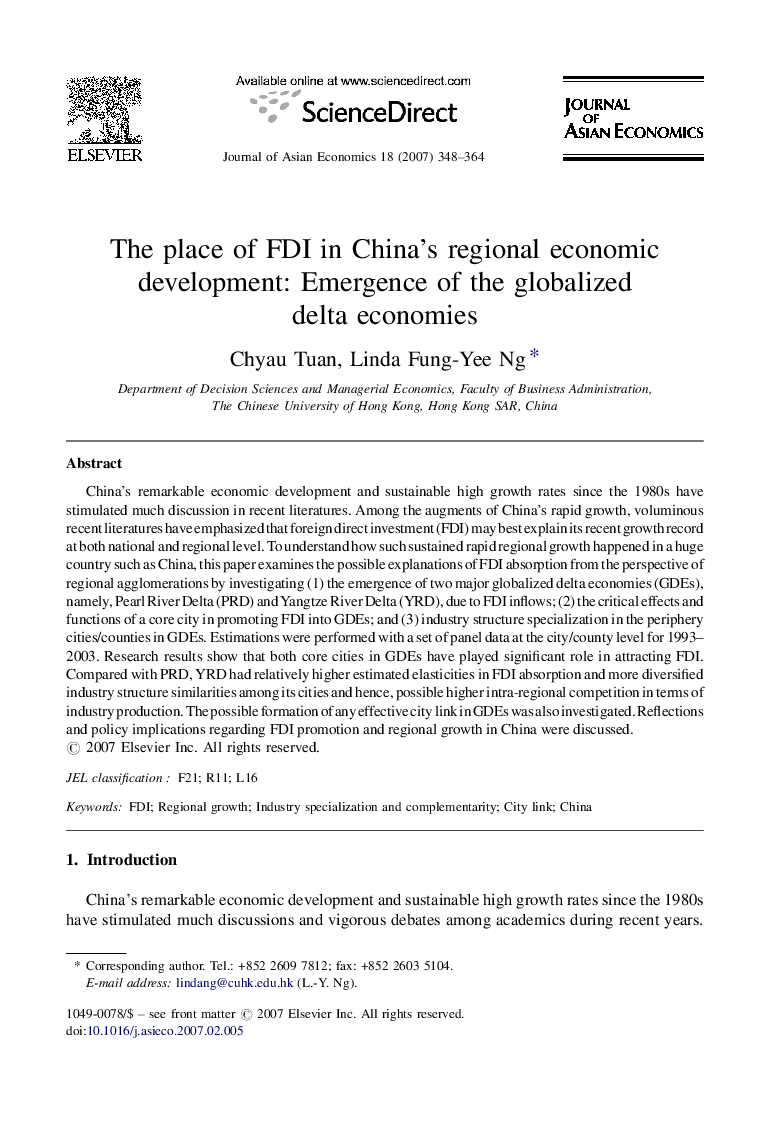| Article ID | Journal | Published Year | Pages | File Type |
|---|---|---|---|---|
| 5087829 | Journal of Asian Economics | 2007 | 17 Pages |
China's remarkable economic development and sustainable high growth rates since the 1980s have stimulated much discussion in recent literatures. Among the augments of China's rapid growth, voluminous recent literatures have emphasized that foreign direct investment (FDI) may best explain its recent growth record at both national and regional level. To understand how such sustained rapid regional growth happened in a huge country such as China, this paper examines the possible explanations of FDI absorption from the perspective of regional agglomerations by investigating (1) the emergence of two major globalized delta economies (GDEs), namely, Pearl River Delta (PRD) and Yangtze River Delta (YRD), due to FDI inflows; (2) the critical effects and functions of a core city in promoting FDI into GDEs; and (3) industry structure specialization in the periphery cities/counties in GDEs. Estimations were performed with a set of panel data at the city/county level for 1993-2003. Research results show that both core cities in GDEs have played significant role in attracting FDI. Compared with PRD, YRD had relatively higher estimated elasticities in FDI absorption and more diversified industry structure similarities among its cities and hence, possible higher intra-regional competition in terms of industry production. The possible formation of any effective city link in GDEs was also investigated. Reflections and policy implications regarding FDI promotion and regional growth in China were discussed.
